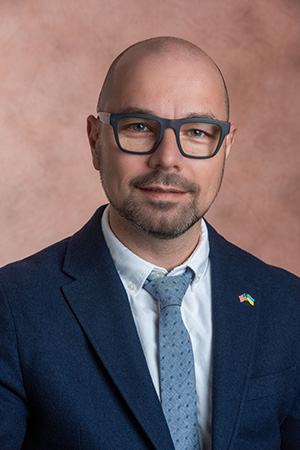
As the number of people with depression in the U.S. continues to grow, so too does the prevalence of treatment-resistant depression (TRD), a condition where one’s depressive disorder does not improve sufficiently even after multiple trials of otherwise effective treatments. This reality, if left unchecked, sets the stage for increasingly poor health outcomes, premature deaths, and deaths by suicide.
A team of clinicians and researchers – all members of the TRD Task Group at the National Network of Depression Centers (NNDC) – is attempting to address the problem head-on with the publication of a two-part article series in the Journal of Clinical Psychiatry.
The consensus statement published by the team in the widely read peer-reviewed medical journal provides a first-of-its-kind roadmap of best practices for developing and sustaining TRD consultation programs and establishing state-of-the-art processes for providing second-opinion evaluations of patients with TRD.
The guidance could not come at a more crucial time, said Vitaliy Voytenko, PsyD, associate professor in the departments of Psychiatry and Medical Ethics, Humanities, and Law at Western Michigan University Homer Stryker M.D. School of Medicine (WMed).
Depression is a major public health concern and among the most disabling illnesses in medicine, affecting an estimated 300 million people across the globe. The team points out in its consensus statement that “physiological and psychosocial disruptions produced by depression and other mood disorders are associated with many negative outcomes including unemployment, deteriorating health, premature mortality, and death by suicide.”
“TRD is a very common phenomenon because depression is so widespread,” Dr. Voytenko said. “Despite the effective treatments we have available, there is a high percentage of patients – 30 to 50 percent – who, even after multiple trials of otherwise effective treatments, are still very ill. When that occurs, it is often helpful to have a fresh set of eyes to look at the patient and their situation to come up with as personalized of a treatment plan as possible.”

Dr. Voytenko, who is co-lead author on Parts I and II of the consensus statement along with Susan Conroy, MD, PhD, assistant professor of Psychiatry at Indiana University School of Medicine, and Jay Fournier, PhD, associate professor in the Department of Psychiatry and Behavioral Health at The Ohio State University College of Medicine, respectively, said the two-part series is a culmination of more than three years of work that began in 2021 when the TRD Task Group was awarded an NNDC Momentum Grant.
The funding helped convene an in-person summit hosted by Dr. Conroy in Indianapolis in 2022 that brought together a multidisciplinary team of psychiatrists, psychologists, administrators, and patient advocates with the goal of putting together a manual or guideline for medical institutions to establish TRD consultation programs.
“There’s never been a roadmap for creating or sustaining TRD programs so we needed to bring together some of the leading voices to gather our collective wisdom,” Dr. Voytenko said.
Currently, access to specialty clinics for patients with TRD is severely limited and only a dozen or so established depression centers in the U.S. have programs in place to offer consultations and second-opinion evaluations. TRD consultation programs can offer an individualized treatment plan that can be implemented by patients and their providers with the goal of increasing the likelihood of response or full remission of symptoms. Given that likelihood of success, the authors of the two-part consensus statement hope the guidance they have provided will spur the development of more TRD-focused programs within mental healthcare settings and provide greater access for patients to experts with advanced training and experience in mood disorder interventions.
“Our multidisciplinary team from all around the National Network of Depression Centers brought our experiences of what works the best in our respective consultation programs and combined this with the best available evidence on TRD evaluation,” Dr. Conroy said. “We wanted to distill this down into specific practical elements so that the model can be replicated elsewhere.”
Given the challenges surrounding access to treatment and that many patients in the U.S. must travel long distances for care, the research team points out specifically that TRD consultation and evaluation programs, in order to be successful, must be informed by what treatments are available in the patient’s specific community or neighboring communities. It also recommends that patients who receive a second-opinion consultation should be offered a six-month or a one-year follow-up visit with the consultation team to ensure the treatment plans are being implemented properly leading to an improvement of symptoms.
Looking ahead, the TRD Task Group for the NNDC, which includes Drs. Conroy, Fournier, and Voytenko, will hold future meetings to lay the groundwork for empirically evaluating whether following the guidance provided in the consensus statement measurably improves patient outcomes. A second NNDC Momentum grant that was recently awarded to the task group will fund that future research.
“Over the last decade, we’ve learned just how widespread, complex, and challenging treatment resistance in depression really is,” Dr. Fournier said. “But there simply are not enough TRD consultation programs to meet the needs of patients. Our goal with this series is to offer an accessible, actionable roadmap for providers who want to build these programs in their own institutions — and ultimately to expand access to expert care for the patients who need it most.”
